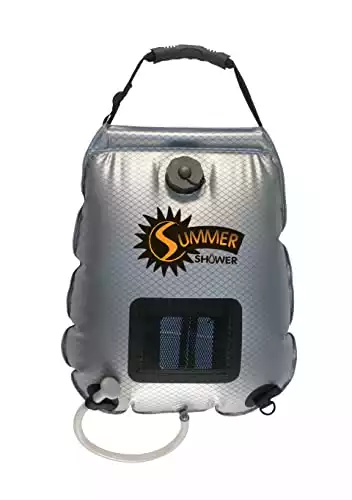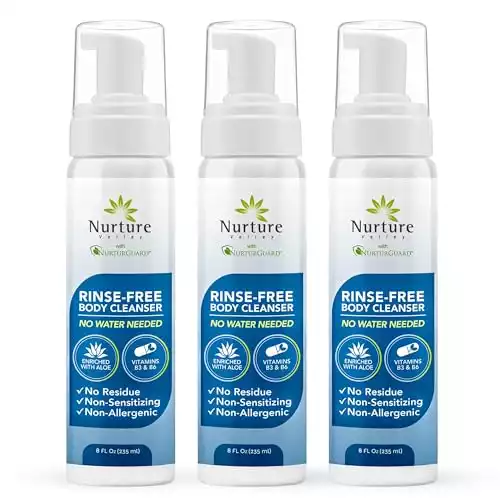Have you ever faced the dreaded cold shower dilemma?
Whether due to a broken water heater or a power outage, knowing how to take a bath or shower without hot water can be a lifesaver.
This comprehensive guide provides clever hacks and alternative methods for bathing and showering without hot water, ensuring you’re never left out in the cold again.

How to Take a Shower or a Bath When There Is No Hot Water
Technology is amazing…until it isn’t.
We rely on it for so many things, including the simple luxury of a hot shower.
But what happens when a power outage strikes or your water heater decides to call it quits?
Suddenly, the thought of a cold shower becomes a harsh reality.
Don’t worry!
Staying clean and refreshed is still possible, even without hot water.
We’ve compiled a list of clever solutions and alternative showering and bathing methods that will have you feeling your best, regardless of the temperature.
Get ready to explore surprisingly effective ways to conquer the no-hot-water challenge!
1. Heat up the Water
If your water heater is out but you still have electricity, you can still enjoy a warm bath or shower by heating water manually.
Although it’s a bit inconvenient, you can manage a warm soak or rinse.
For a bath, you’ll need to warm enough water to temper the cold water in your tub.
It’s best to add the hot water first, then gradually mix in cold water until you achieve the desired temperature.
Typically, a comfortable bath requires about 15 gallons of hot water, which is usually complemented by 10 gallons of cold water.
To prevent your heated water from cooling down between batches, keep the bathroom warm by shutting the door and windows, turning off the exhaust fan, and storing the hot water in a smaller container like a large bucket or basin until you’re ready to use it.
These steps help maintain the water’s temperature until you have enough for your needs.
If you need to shower, a watering can filled with warm (not hot) water can serve as a makeshift shower.
Just wet yourself quickly, soap up, and rinse off without keeping the water running constantly.
2. Heating up Your Bath With Hot Stones
Another interesting way to heat up the water for your bath is to add hot stones to your bath.
By heating stones in the microwave, stove, or an open fire, you can add the heated stones to your bathwater, which will heat up the water.
Your stones need to reach a temperature of more than 130℉ to heat up the water.
3. Safely Drain Your Water Heater or Geyser
Should your water heater or geyser become inoperational, you can drain the pipes of your water heater.
Simply turn the shut-off valve, cutting off the water supply.
Now you can let all the hot water pump into the bath.
4. Use a Solar Shower Bag
Solar shower bags are a great eco-friendly and cost-effective way to take a warm shower without needing access to a traditional hot water heater.
This solar shower bag boasts a generous 5-gallon capacity and is engineered to heat water quickly. It can warm water up to 110 degrees in less than three hours with direct sunlight exposure.
Here is how to use it:
- Fill the bag with cold water from a hose or sink in the morning.
- Hang the filled bag in direct sunlight, positioning it to get maximum sun exposure.
- The dark color and insulated design helps absorb solar energy and heat the water.
- After several hours of sunlight, the water inside will be pleasantly warm, up to around 100°F on very hot days.
- Hang at the desired height, pull the nozzle to release the water and take your shower.
5. Take a Sponge Bath
Sometimes you will not even have the luck of being able to boil a large quantity of water or the ability to lay a complaint.
This is where a sponge bath can help you get clean despite not being able to shower.
Simply pour a kettle of hot water into a small bowl, wet your sponge, and wipe your body.
6. Use a Dry Shower Gel
When you can’t shower or bath, you can always opt for a dry shower.
This innovative cleanser provides a water-free bathing experience for situations where traditional bathing isn't an option.
Designed to be used by active people who want to clean up on the go, this dry foaming shower gel can help your cleaning routine when there’s no hot water available.
Simply spray on the foaming gel and wipe off, no rinse required.
7. A Powder Shower
Before innovative products like dry foam shower gels, people used to rely on a powder shower.
This is simply “bathing” in baby powder or talcum.
The baby powder removes sweat and body odor without the use of water.
8. Skip the Hair Washing Routine
If you are a typical hygiene fanatic, then you probably wash your hair daily, but when there is no hot water, you may have to resort to washing your hair every other day instead.
Far from being harmful, washing your hair less frequently and in cold water is actually good for your hair.
Skipping your hair washing routine for a few days can help smooth frizzy hair and reduce dandruff too.
9. Use a Gym Shower
If you have a gym membership, you can use their showers as an option.
This can be a particularly good solution if you know you’ll be without hot water for an extended period of time.
Keep in mind that gym locker rooms can get crowded, so plan your shower during off-peak hours if possible.
Also, be sure to bring your own toiletries and a shower flip-flops for hygiene purposes.
10. Take a Cold Shower or a Bath
Finally, when your broken boiler or broken water heater forces you to discover a cold bath or shower, you may be surprised by the benefits and just how good it feels.
Benefits of a Cold Shower or a Bath
The benefits of a cold shower include:
- Less itchy skin and settled sebum production
- Great looking hair and skin
- Better blood circulation
- Improved levels of alertness
How to Properly Take a Cold Shower or a Bath
Training your body to accept a cold water shower can help you endure the bracing experience when you have no other choice but to step into the cold water.
These steps will help you prepare mentally and physically for a cold shower or bath and actually enjoy it.
- When you are going to take your first cold shower, start with a warm shower. Gradually decrease the temperature and start running the cooler water over your extremities.
- Warm up after your shower to prevent shaking and discomfort.
- Wrap your body in a towel before you step into the shower. This helps your body to accept the cool water more easily.
- Ensure your bathroom space is warm and cozy so you can warm up as soon as you step out of the tub or shower.



